
© Laurent Liotardo. (Click image for larger version)
English National Ballet
Giselle
★★★✰✰
Manchester, Palace Theatre
27 September 2016 – World premiere
www.ballet.org.uk
Giselle is my favourite 19th century ballet – it seems such a gem of realistic human emotion in the first act, fused to a supernatural world in the second and where love and forgiveness conquer all. Good ones can make my eyes mist over. But I also go to dance to see steps done incredibly well and new steps and combinations of movement particularly. My eyes might not mist up, but boy do I find new movement super-satisfying and interesting. A ballet that fused the two would leave me in seventh heaven. So where was I on seeing the world premiere of the new Akram Khan Giselle for English National Ballet? Answer: thrilled and gobsmacked by some of the new movement, particularly for the whole company. And not so moved by the storytelling and more intimate dance.
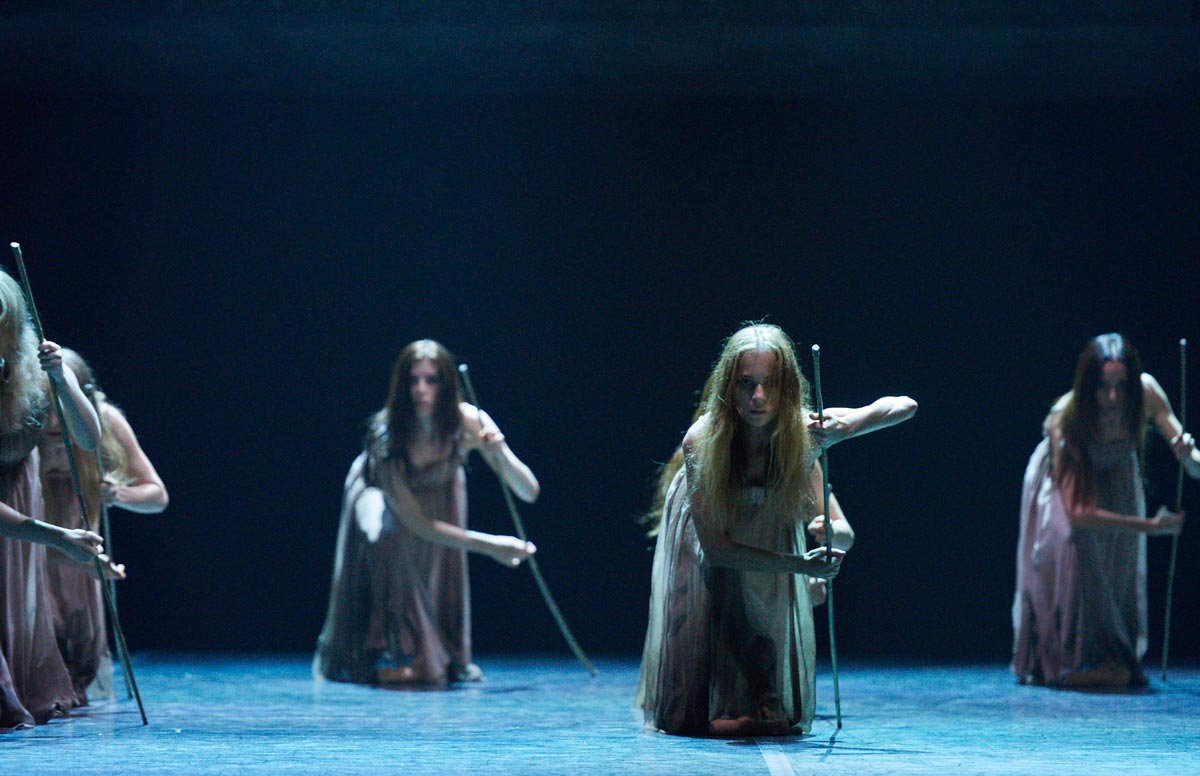
© Laurent Liotardo. (Click image for larger version)
The Khan Giselle is part of a new wave of work as ballet companies look to retell classics and/or develop new narrative work in different styles. The one thing I’ve drawn from the new interest in making narrative work, be it full evening or one act, is that narrative choreographers are not born and it takes a while for them to grow the skills that readily communicate what’s happening to the public and show character clearly in movement. Akram Khan is a Kathak-trained contemporary dancer/choreographer of rare distinction, but this was his first full-evening work for a ballet company. Even with a dramaturg on the creative team (Ruth Little) perhaps we shouldn’t be surprised if the storytelling doesn’t hit us straight between the eyes with its clarity. The base plot is essentially simple and related to the original, with the villagers transformed into migrant factory workers (the Outcasts) and the hunting party transformed into the Landlords, the two separated by a giant wall that rotates to allow the Landlords to enter the real world. The wall and design is from film designer Tim Yip and works well. The Outcasts are un-colourfully dressed and the Landlords, very richly dressed, indeed totally over-the-top in some cases. Much of Mark Henderson’s lighting is from above and there’s a dark, smokey atmosphere in general – in both acts – and that makes reading the work more difficult.

© Laurent Liotardo. (Click image for larger version)
What makes getting your bearing rather more difficult is that the music is for the most part new. It’s stated to be after the original score, and that might cause you to believe that you will recognise various tunes throughout the night, but other than a few bars, you are unlikely to recognise that much. That’s not to say it’s bad at all – the score is brooding, often has a Balkans or Middle Eastern feeling and with the dreaded beat of a muffled drum propelling things forward. Many times the music follows Khan’s movement, usually in slowly escalating urgency, until you feel ready to pop with the magnitude of it all, coupled, as it is, to the throbbing power coming from a stage full of agitated dancers. But it’s a device used once or twice too often and at times you wonder what the story point was, for all its undoubted visceral power. Vincenzo Lamagna composed the score, which must have proved incredibly difficult when Khan and the original composer announced they were going their separate ways in mid-August – 6 weeks before getting on stage in Manchester. Given that perspective, it’s a significant achievement, if I still wish that the music was nearer Adolphe Adam’s original and/or also more varied in its approach.
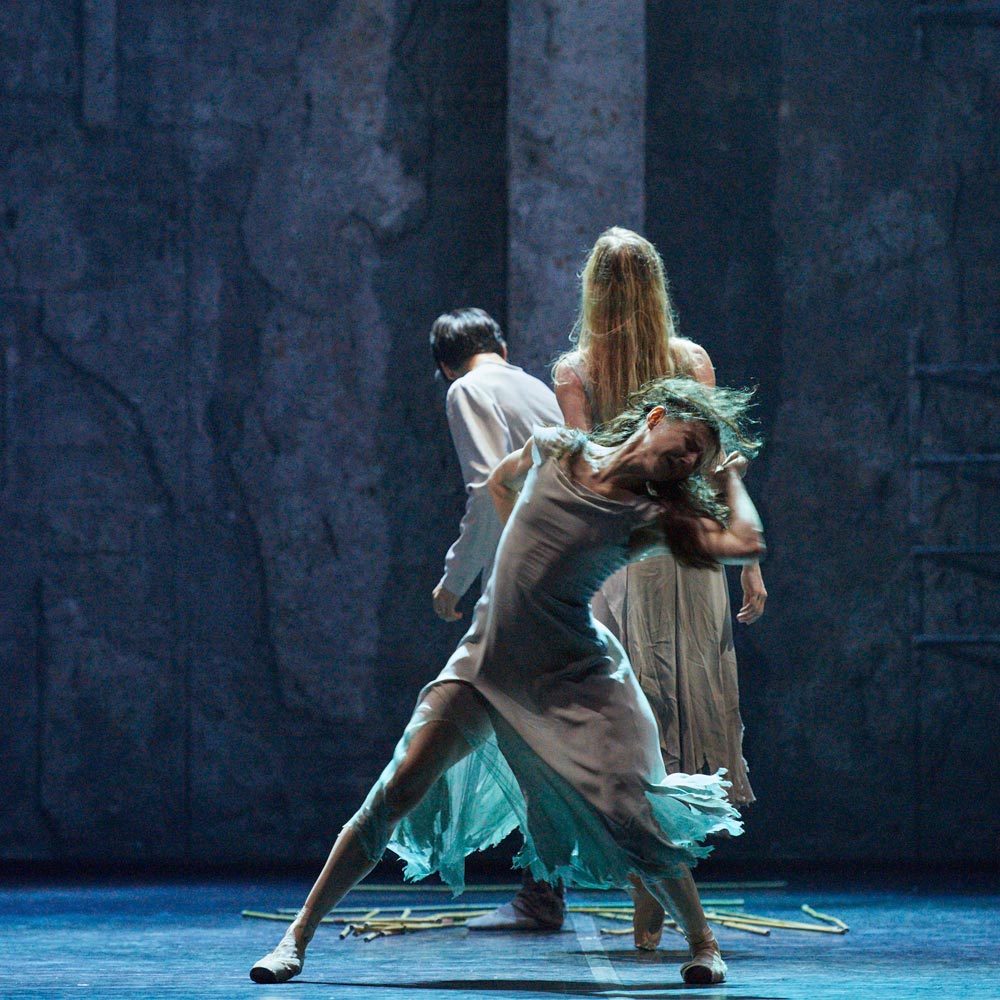
© Laurent Liotardo. (Click image for larger version)
Alina Cojocaru is a noted Giselle and her performances in Peter Wright’s Royal Ballet production were legendary for their nuance and realism. Hard to image that Khan could pick a better Giselle for his production premiere, if many of us have yet to see Tamara Rojo dance the role. As director and lead dancer of ENB, the whole enterprise is down to her. She has clearly been something of a muse in its creation, and images of her have been much used in sales and marketing. Cojocaru is a waif and looks right in both acts, but the lighting makes it hard to see her face much of the time. In a normal production act 1 is sunny and we see her and Albrecht’s love blossom clearly. Not so here, but we can revel in the gorgeous movement of her arms and body. The role of Hilarion is made more of and he’s not just the reliable love interest of traditional productions. This one chases Giselle for sure but is also a shady fixer who straddles the world of Outcasts and Landlords and may even have murdered her – it’s not clear. Cesar Corrales made the most of the role and danced and acted in big scale – his look and style suits the earthiness of Khan’s contemporary movement. Albrecht was the fine Isaac Hernandez, who does nothing wrong at all and partners Cojocaru well in a couple of loosely-coupled duets. But for me it’s not the one-to-one work that so impresses in Khan’s movement.
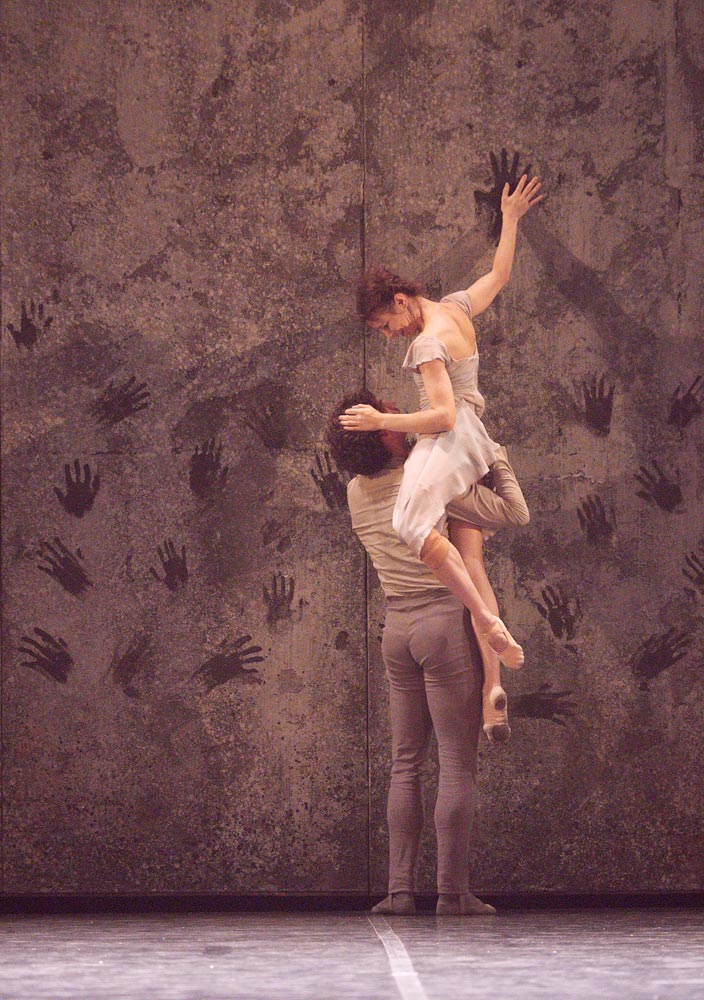
© Laurent Liotardo. (Click image for larger version)
Where Khan’s Giselle really takes off is in his handling of the massed ranks of the company – either as Outsiders (or villagers) and for the Wilis in act 2. None of it is the movement of a normal ballet stage: it’s fast, powerful, free-flowing and flexes from Neanderthal gestures to 20th century modern in just a few steps. With the gathering drums and blare of Lamagna’s music it really thrills as a spectacle, pure and simple. One of the strongest parts is Giselle’s madness and death where the Outcasts join arms and tightly circle her and she seems to be in the eye of a hurricane, with just occasional snatched glimpses of her tossed body. The movement resonates with the same feeling you get from the most photographed section of Khan’s Dust (also for ENB) – where they link arms and generate a standing wave of power. The collective energy goes through the roof.
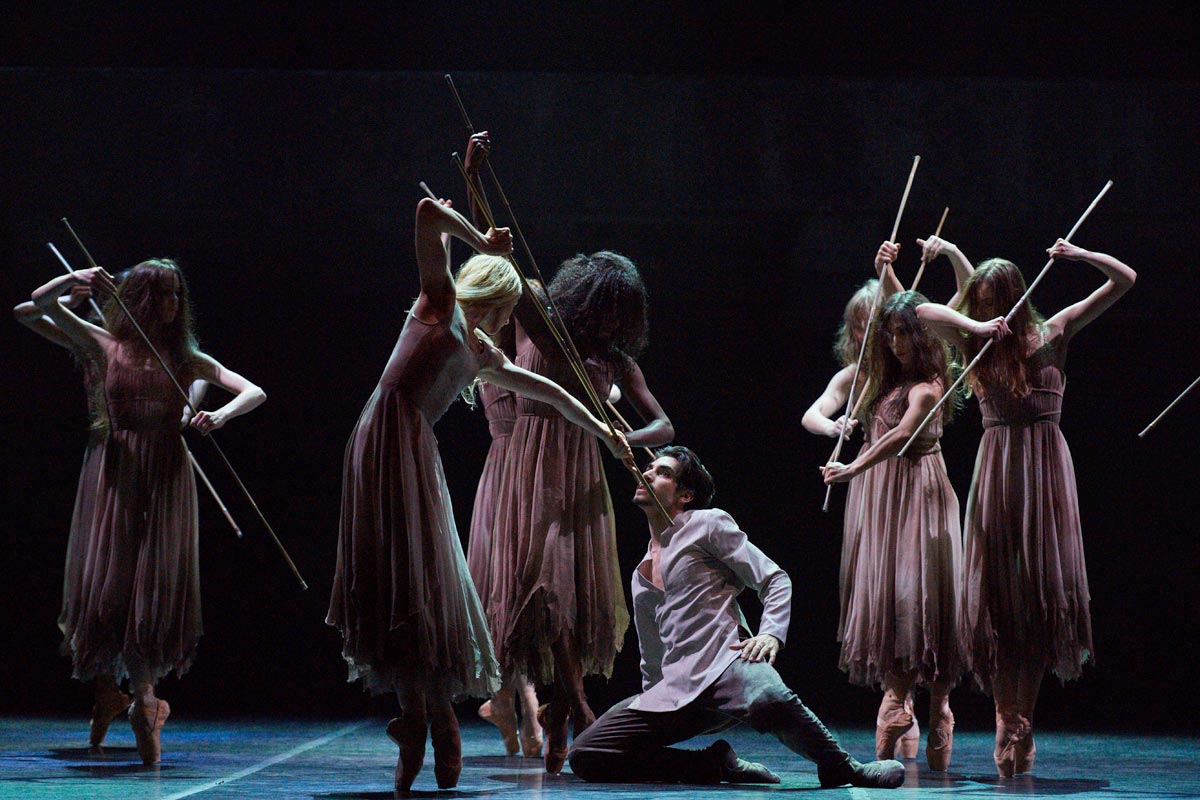
© Laurent Liotardo. (Click image for larger version)
For the Wilis, out go the little wings and in comes a 6ft pole for each of them – like a badge of office that binds them together and also an offensive weapon that they bang on the floor in scary collective rhythm and use to beat up passing men like Hilarion. These are Wilis of the 21st century rather than the 19th. The Queen of the Wilis (Myrtha) was danced by an imperious Stina Quagebeur – like Corrales making the most of the role. Although the ending of this Giselle is like many in having Albrecht on his own, reflecting on all that has happened, it’s curiously drawn-out and feels ineffectual. But after the final applause everybody was full of energy and there was much animated talk about what is a very different ballet performance by a mainstream company. As UK ballet commissions go, it’s probably the most anticipated of the season and really a career defining decision by Tamara Rojo. This is the way dance moves forward, by the art talking creative risk and if it’s not the full ten tenths yet, then it’s another solid step along the way. This Giselle is interesting but not truly amazing in the telling – the question is who will commission Khan again and so help him hone his narrative skills and take him to the next level? – a level that generates the story excitement that the best of his steps currently can.












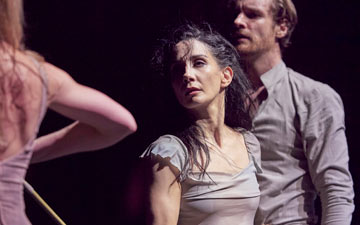




You must be logged in to post a comment.